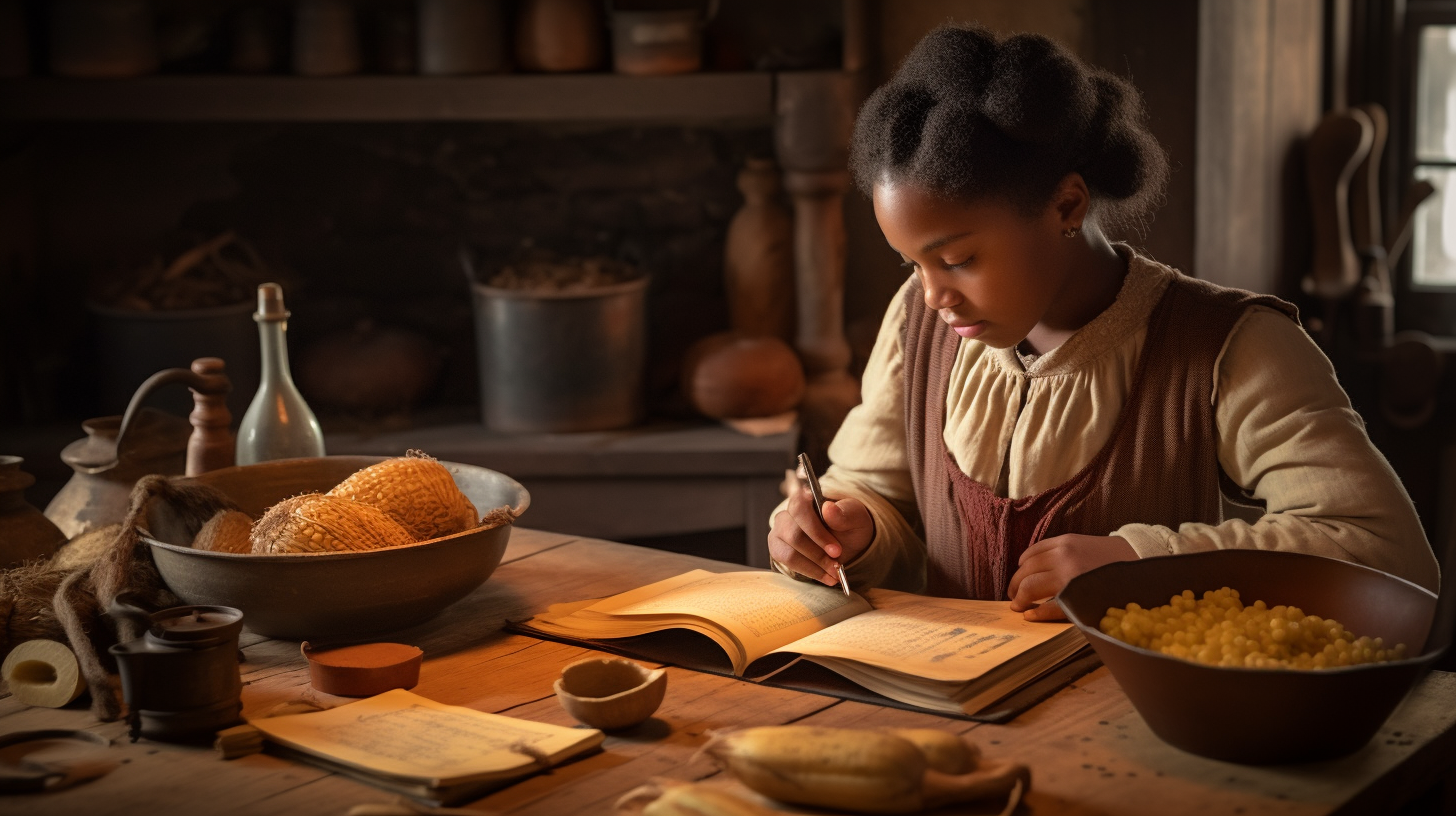Making History Delicious: Amara's Historical Recipe Collection for Thanksgiving
Did you know that some of our favorite Thanksgiving recipes are over 200 years old?
This fascinating fact comes alive through "Amara's Adventures: Jacksonville's African American Museums," where eleven-year-old Amara Adesina's curiosity leads readers on an incredible journey through time!
The Hidden Stories in Our Thanksgiving Dishes
Here's something fascinating - many traditional Thanksgiving dishes carry amazing stories! African American cooks have been adding their special touch to these recipes for generations. From perfectly seasoned cornbread to mouth-watering sweet potato pies, these dishes tell stories of creativity, resilience, and celebration.Teaching Tip: Use our free "My Family Recipe Detective Worksheet" to help students document their own family's culinary history. Just like Amara explores museums, your students can become history detectives in their own kitchens!
Historical Recipe Exploration
Just as Mrs. Marsha Dean Phelts preserved vital history in her book about American Beach, we can help young minds discover history through food. Our "Family Food History Interview Guide" provides a structured way for students to collect and preserve their own family stories. Here's what young historians might discover:Recipes passed down through generationsDishes that tell stories about different culturesSpecial cooking techniques that connect us to the past
Must-Try Historical Recipes
Colonial Cornbread with a Twist
Colonial Americans adapted European bread-making techniques using Native American cornmeal, creating this uniquely American dish. Every region developed its own variation, with Southern recipes typically excluding sugar.-
2 cups stone-ground cornmeal
1 teaspoon salt
1/2 teaspoon baking soda
1/2 teaspoon baking powder
1 large egg
1 1/2 cups buttermilk
2 tablespoons bacon drippings or butter
1 tablespoon honey (optional - a modern twist)
-
Preheat oven to 450°F with cast-iron skillet inside
Mix dry ingredients in one bowl
Whisk wet ingredients in another bowl
Add hot bacon drippings to batter, stir quickly
Pour into hot skillet
Bake 20-25 minutes until golden brown
-
Using a cast-iron skillet like they did in colonial times makes the crust extra crispy!
Three Sisters Harvest Stew
The "Three Sisters" - corn, beans, and squash - were planted together by Native Americans. The corn provided poles for beans to climb, beans enriched the soil with nitrogen, and squash leaves provided ground cover to retain moisture.-
2 cups dried corn (hominy)
2 cups fresh green beans
2 cups butternut squash, cubed
1 onion, diced
4 cups vegetable broth
1 tablespoon sunflower oil
1 teaspoon dried sage
Salt and pepper to taste
-
Sauté onion in sunflower oil
Add broth and corn, simmer 20 minutes
Add squash, cook 10 minutes
Add green beans, cook 5 minutes
Season with sage, salt, and pepper
-
This Native American dish teaches us about companion planting - growing corn, beans, and squash together!
Victorian Pumpkin Pie Surprise
Victorian-era pumpkin pies differed from modern versions, using molasses instead of processed sugar and incorporating unique spices that were becoming more available through increased trade-
2 cups roasted pumpkin puree
1/2 cup molasses
2 large eggs
1 cup heavy cream
1 teaspoon ground ginger
1 teaspoon cinnamon
1/4 teaspoon ground nutmeg
1/4 teaspoon ground cloves
1 unbaked pie crust
Whipped cream (optional)
-
Preheat oven to 375°F
Mix pumpkin, molasses, and spices
Beat in eggs and cream
Pour into pie crust
Bake 45-50 minutes
-
This recipe uses molasses instead of sugar - just like they did in the 1800s!
Bringing History to Life
Want to explore history like Amara? Try these engaging activities:Create a family recipe documentary using our interview guideStart a classroom heritage cookbook with completed recipe detective worksheetsResearch the origins of traditional dishesCompare cooking methods across generations
Teacher Resource Spotlight: Download our free educational materials:
My Family Recipe Detective Worksheet: Perfect for grades 1-3, this worksheet helps students document and investigate their family's special recipes. Just like Amara explores museums, your students will explore their own culinary heritage!Family Food History Interview Guide: This comprehensive guide helps young historians capture important family stories about food traditions. Students practice interview skills while preserving precious family memories.
Educational Extensions
Quick activities to try:Math: Use the Recipe Detective Worksheet to practice measurements and conversionsSocial Studies: Create a classroom map showing the origins of interviewed family recipesLanguage Arts: Write food history journals based on family interviewsCultural Studies: Compare different family traditions discovered through interviews
Join Amara on Her Historical Food Journey!
Ready to start your own historical adventure? Get your copy of "Amara's Adventures". Perfect for ages 6-9, this 26-page journey through Jacksonville's African American museums will inspire curiosity about history and culture. Plus, your purchase helps the environment - Diaspora Whispers Books Publishing Company donates 10% of sales to tree-planting initiatives!Want to make an even bigger impact? Consider making a donation to help put this inspiring story into the hands of children who might not otherwise have access to diverse literature.Remember, every recipe tells a story, and every meal we share connects us to history. What stories will your students discover?





